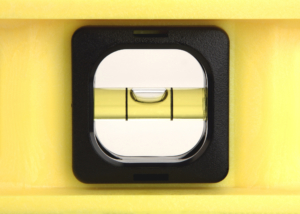Answer the Question

Q. What do you do when your client or customer asks you a question?
A. Why, answer the question, of course! (Doh!)
But – what if the question itself is flawed, or incomplete, or dangerous to answer?
For example:
- What if a potential client wants to know the price before you have explained the value?
- What if a client demands to know the final recommendation before going through the analysis?
- What if a client phrases a question as a simple “go or no-go” when the issue requires nuance?
- What if a potential client asks you a very pointed and narrow question about your qualifications?
Then what do you do?
On the one hand, if you answer the question directly, you risk giving an incomplete answer. You open yourself up to a ‘gotcha’ question. Worse, you legitimize a partial or even misleading question by the mere act of responding to it.
On the other hand, if you don’t answer the question, you risk offending the client. Worse, you look like you’re trying to hide something. And, it’s likely to come off as just disrespectful.
How can you avoid disrespecting the client, while not opening yourself up to an unfair and premature judgment?
How to Answer the Question
There is a way out of this dilemma. Better yet, it not only avoids a negative – it actually helps build trust. Here’s what you say:
- Flatly and simply answer the direct question you were asked
- Pause
- If necessary, offer to answer more questions
Here are some examples: then I’ll talk about why they work.
Client: Before we dive into specifics of the situation, I want to know the price on this project.
You: Depending on several issues, around $225,000.
[Pause]
Client: Um, depending on what, for example?
Client: Before you go on to page three of the presentation, I want to know: do you recommend we close the factory, or not?
You: We recommend you close it.
[Pause]
Client: OK, why?
Client: How much experience do you have doing marketing studies for tech services companies?
You: Two prior clients in the past 18 months.
[Pause] [More Pause]
You: Is there something else it would be useful to talk about?
Note the critical role in the dialogue of the [Pause]. In the first two cases, the client is the one who fills in the quiet space. In the third – after making extra-sure of the pause – you fill in the space, by respectfully offering to answer any more questions
The Text and the Sub-text
That’s the text. The sub-text is what’s critical here.
First, the answer. It has to be simple, specific, and directly responsive. That’s because the critical sub-text is all about respect.
By being simple, specific and responsive, you are conveying to the client, “I am willing to let you take the lead here. I am not going to quibble about the relevance of your question, or its potential for revealing value. I am not going to ’spin’ my answer to suit my own needs, but rather will defer to your terms, as stated by you. I will not hedge, hem, nor haw. I respect your right, as the client, to set the agenda and ask the questions; I will reserve my own attempts to frame the issue until you are satisfied. I respect you.”
One effect of showing respect by being simple, specific and responsive is that you reduce the level of fear and aggression in the client. You are demonstrating that this conversation does not have to be a competition, and the client need have no fear about you attempting to control them.
The other effect is to validate the client, to show them that they have asked a fair question, and that you have given a fair answer. Presuming fairness and reciprocating in kind appeals to the client’s innate tendency to return like for like – fairness for fairness – vs. engaging in passive-aggressive games of controlling the agenda.
Second, the Pause. The subtext of the pause is, again, respect. It allows the client to control the agenda (by following up, by taking a new tack, or by simply abandoning the question). This offer of control is another trigger for reciprocity on the part of the client.
Usually – as in the first two examples above – the client will fill in the pause. And their response will usually be tempered by the respect you have already shown them in the simple, specific and responsive answer.
Occasionally – as in the third example above – the pause continues long enough for it to be appropriate for you to offer another comment – and yet another opportunity to show respect. You do this by making explicit what was already implicit – that you are willing to answer any questions, and to respect the client’s right to frame those questions in any form they may want.
The Result
In most cases, this “onslaught of respect” is enough to alter the tone of the entire meeting. Instead of being cautious, suspicious, and aggressive, the client is likely to reciprocate and return the favor. (The fundamental nature of reciprocity was never better phrased than by Robert Cialdini: take a listen to this podcast interview of Cialdini by Barry Ritholtz).
You can call this dynamic “give to get,” or “trust to be trusted,” or “mxqtplskz;” what you call it doesn’t matter. What matters is that by treating a loaded question with respect, you can transform the context within which that question is being asked, and thus transform the relationship.
All by just responding to the question simply and specifically – and pausing to show even more respect.
The next time a client asks you a tough question, just try it. [Pause].
